Alaska Regions
Southwest Alaska
Southwest Alaska is made up of six distinct areas the Kodiak Island Archipelago, The Alaska Peninsula, Bristol Bay, The Aleutian Chain, the Pribilof Islands, and the Yukon-Kuskokwim Delta.
The Kodiak Island Archipelago consists of 16 major islands including Kodiak, Afognak, Ban, and Uganik as well as several smaller islands. Kodiak Island, the largest of the group and second largest Island in the U.S., is known as the Emerald Isle. Kodiak’s first inhabitants were the seafaring Alutiiq people. Rich marine resources supported their subsistence lifestyle. Russians arrived in the late 1700s to hunt sea otters. They established themselves on Kodiak Island and it became the capital of Russian America. Today, villages throughout the archipelago offer a glimpse into this history. Over a thousand archaeological sites have been identified. The Russian Orthodox religion is a lasting legacy of the Russian influences. Kodiak Island was also a major staging ground for North Pacific operations during World War II and abandoned bunkers are even accessible there. Kodiak Island Archipelago is home to five state parks and recreation areas including the Kodiak National Wildlife Refuge which covers 2/3 of Kodiak Island.
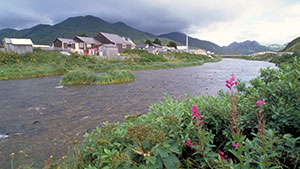

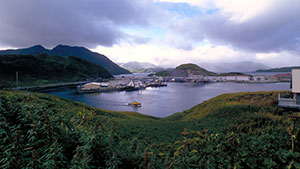
The Alaska Peninsula extends 550 miles into the Pacific Ocean and is home to Katmai National Park & Preserve, which was established as a national monument in1918 to preserve the Valley of Ten Thousand Smoke and later was designated a national park and preserve in 1980. The Peninsula’s mountains, volcanoes, marshy lowlands, and beautiful turquoise waters are home to moose, caribou, red fox, tundra swans, wolverines, sea otters, eagles, and of course world class rainbow trout along with five species of salmon. The Alaska Peninsula also houses the largest lakes in Alaska, Becharof Lake, Iliamna Lake, and Lake Clark which is within Lake Clark National Park and Preserve. The Peninsula also contains the 3.5 million acre Alaska Peninsula National Wildlife Refuge, known for its fishing, birding, and land and sea mammals. The Aleut and Alutiiq people call the peninsula home with their heritage spanning more than five thousand years. They are maritime people who depend on the sea for much of their food and livelihood. There cultures were heavily influences in the late 1700s by the Russians, and still are today. Russian Orthodox churches populate this area in nearly every community. This are is well known for backpacking/hiking, birding, fishing, hunting, photography, and wildlife.
Bristol Bay is home to caribou, moose, bear, and walrus, as well as small game such as beaver, porcupine, otter, and fox. It’s also the world’s largest source of red salmon, which are attracted to the area’s rich freshwater spawning streams which flow into nearby bays and rivers. The area supports world renowned spawning and harvesting of all five species of Pacific salmon; sockeye, king, silver, chum, and pink as well as arctic char, grayling, rainbow trout, northern pike, dolly varden, and lake trout. Beluga whales and Orcas (killer whales) follow the salmon runs as well, so sightings can be common. There are many cultures that meet in the Bristol Bay area including Eskimos, Aleuts, and Athabascans, whose traditional, mixed customs are evident in the region.
The Aleutian Islands (also known as "The Chain"), best known for their concentrations of sea birds, are located in the world’s most beautiful, dramatic regions. The islands sweep one thousand miles westward toward Asia and are mostly Wildlife Refuges which are home to immense colonies of whales, fur seals, stellar sea lions, sea otters and birds, including the rare whiskered auklet and ancient murrelett. Aleuts have inhabited this region since the second ice age. Russian influences began in the 1740’s when fur traders came to the islands to secure sea otter pelts. Russian Orthodox remains the dominant religion today. The Aleutians were very important, strategically, during World War II in preventing the Japanese invasion of the U.S. Japanese forces actually occupied Attu Island and Kiska Island in 1942. Traces of this era can still be found throughout the islands today.
Ferry through the “Ring of Fire” – Homer to Dutch Harbor
Located in the heart of the Aleutian Island Chain-Making the journey to UnAlaska/Dutch Harbor is on of the most exotic, remote, and truly "wild" adventures you will find in Alaska. The experience begins in Homer at the end of the Kenai Peninsula 237-miles south of Anchorage. The Alaska Marine Highway's ocean going ferry the M/V Tustumena makes the seven-day round trip journey twice a month summer only May-Sept.
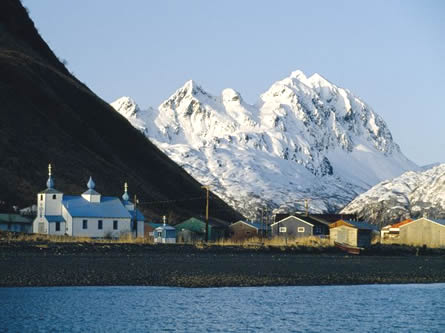
The Aleutian Islands are home to the endangered Steller sea lions and northern sea otters, they are commonly spotted as you travel through the island-chain along with the Humpback whales, Harbor porpoises, Pacific white-sided dolphins, Harbor seals and the Killer whales.
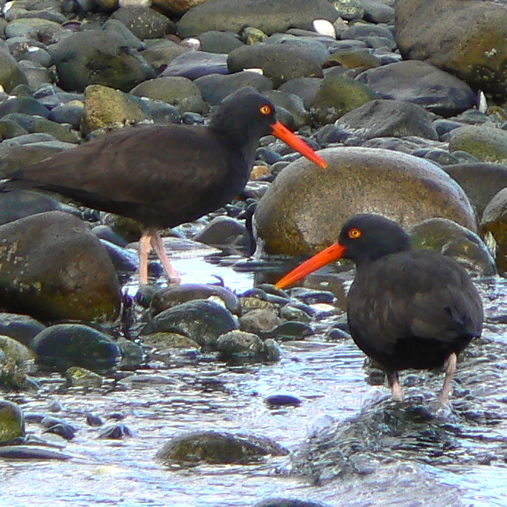
Birders come from all over the world - forty million seabirds nest throughout the Aleutians.
Our clients often ferry out to Dutch Harbor and fly back to Homer via Anchorage. This gives you more opportunity to explore Dutch Harbor/Unalaska on your trip. Ask us about airfare specials applicable to taking the ferry one way and a flight on the return to Homer or Anchorage. Reverse itinerary is also available.
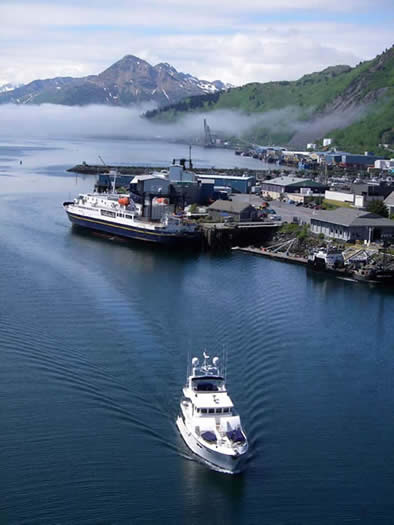
The Alaska Ferry dock at Dutch Harbor
The Pribilof Islands are five islands, two of which are inhabited, located off the southwest coast of Alaska. They are desolate, wind-swept places where the wildlife has become an attraction despite the inhospitable weather. St George and St Paul make up the largest Aleut community in the World. The islands were used once by Russian fur traders to harvest and preserve sea pelts. The Pribilofs are home to the largest seabird population in the entire Northern Hemisphere. It’s estimated that 2.5 million seabirds nest on St George’s rocky cliffs. More than 210 species, including puffins, murres, auklets, red-legged kittiwakes, and many more can be seen here. Also more than one million fur seals can be seen congregating on the islands every summer. Fourteen seal rookeries can be found on St Paul Island complete with designated viewing areas.
The Yukon-Kuskokwim Delta is a broad wetland surrounded by the Yukon and Kuskokwim Rivers and one the most populated rural areas within Alaska. Most of the wetlands make up part of the 20 million acre Yukon Delta National Wildlife Refuge, which is the largest wildlife refuge in the U.S. Known mostly for it’s waterfowl and bird habitat the refuge also houses musk ox, caribou, brown and black bears, wolves and moose. Hundreds of miles of streams and rivers present pawning and rearing habitats for 44 species of fish including all 5 species of North American Specific Salmon.
Southeast Alaska
Southeast Alaska, also known as the Inside Passage, is the smallest of the five regions. The narrow inside passage is a dramatic coastal region spanning 500 miles from Ketchikan to Yakutat. It’s known for it’s lush green forests, towering mountains, majestic fjords, and abundant marine and wildlife. Home to Haida, Tlingit, and Tsimshian Indians, with evidence of their heritage found throughout the region. Russian influences can also be found throughout the area, with domed churches. Southeast doesn’t have designated areas like other regions and few roads are found outside of populated areas and many of the communities are only accessible by air or water. Southeast consists of many communities such as Haines, Hoonah, Juneau, Ketchikan, Pelican, Petersburg, Prince of Wales Island, Sitka, Skagway, Wrangell, and Yakutat.
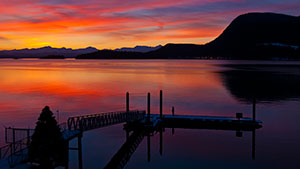
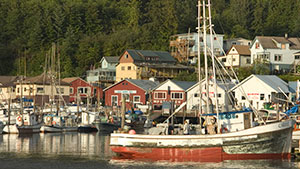

Haines is home to the largest gather of bald eagles in the world and is located on America’s longest Fjord, the Lynn Canal. There is abundant wildlife with great opportunities to see moose, bears, and 260 species of birds, humpback whales, harbor seals, otter, orca whales, and more. It’s recognized for it’s scenic beauty and art culture.
Hoonah is a small quiet fishing village located at Icy Strait Point and is known for excellent fishing and whale watching. Home to the Huna Tlingit since advancing ice pushed them from the shores of Glacier Bay.
Juneau is Alaska’s capital and the largest city in the Inside Passage. It’s known as the gateway to Glacier Bay National Park. Glacier viewing is both easy and amazing. Mendenhall Glacier is accessible here as well as the Tracy Arm Fjord.
Ketchikan is often called “The Gateway City” because it is the southern most port and is an access point for travelers heading to Prince of Whales Island, Metlakatla, Hyder, and the Misty Fjords. It’s recognized as one of the top 100 arts communities in America and is the fourth largest city in Alaska. Native art and culture flourish here due to a large population of Native Alaskans, represented by three indigenous tribes; Tlingit, Haida, and Tsimshian. Ketchikan also has the largest population of totem poles in the world.
Pelican is one of the last true waterfront boardwalk villages in the U.S. It’s built entirely on a wooden boardwalk made of pilings and surrounded by lush forests and watery fjords. There is no road access and they rely on commercial fishing and processing
Petersburg, often called “Alaska’s Little Norway”, is a small, charming, and friendly fishing town housing the largest home-based halibut fleet in Alaska. Waterfront features picturesque buildings on tall pilings and many commercial fishing boats fill the three harbors, especially in peak season, as well as personal pleasure crafts. Petersburg’s Norwegian culture is evident with decorative rosemaling on houses and storefront and a Viking Ship reproduction located on Hammer Slough, and there festival held in May.
Prince of Wales Island is a heavily forested island and is the third largest island in the entire United States. Tlingit and Haida tribes were the first to inhabit this island, and still keep their traditions alive today. Totems parks in Klawock, Hydaburg, and Kasaan display cedar totems. The oldest human remains found in Alaska or Canada were found on Prince of Wales Island, dated at around 9,200 years ago. Commercial fishing brought permanent settlement to the island and remains crucial to the communities to this day.
Sitka is located on Baranof Island as is often referred to as “Sitka by the Sea” known for spectacular setting and beautiful scenery. Humpback whales, sea otters, eagles, harbor seals and sea lions are just a few of the wildlife that frequent this area. Local landmarks include Mount Edgecumbe a 3,200 ft dormant volcano. Sitka was also the Russian capital of Alaska from 1808 to 1867 and then became the Territorial capital from 1967 to 1906 when it was then moved to Juneau. Sitka also hosts twenty four attractions listed on the National Register of Historic Places and seven which are National Historic Landmarks.
Skagway is often associated with the “Gold Rush” and is home to the Klondike Gold Rush National Historical Park. The Historic District in downtown Skagway has boardwalks lined with false-fronted buildings. The Historic District, as well as other local attractions, can be found on the National Register of Historic Places.
Wrangell is known as the “gateway to the Stikine” a river that offers wildlife, glaciers, and hot springs. Four groups of people helped to shape the history of this town including the Russians, English, Americans, and Tlingit Indians; who were the first to inhabit the area. Wrangell has had two gold rushes throughout the 1800s and retained its frontier appearance with false-fronted building along its Front Street downtown.
Yakutat, known as the Surfing capital of Alaska, lies between the Gulf of Alaska and the Wrangell St Elias National Park and is also home to the second largest peak in the Untied States, Mount St Elias which is 18,000 ft tall. Mt Elias rests at the head of the Malaspina Glacier the largest piedmont glacier in North America. The Hubbard Glacier and Russell Fjord are also accessible here. All five species of Pacific Salmon can be found here as well as halibut, rainbow trout, steelhead trout, cutthroat trout, and Dolly Varden.
Interior Alaska
Interior Alaska houses tundra and forests populated with wildlife that ranges from grizzlies to herds of caribou and is characterized by large rivers and broad valleys. Climatic extremes bring colder winters and warmer summers than in any other region in Alaska. The interior is the original home to the Athabascan Indians. It was later discovered by gold miners, farmers, and fur trappers for the riches of this region. Like other regions within Alaska, the interior has four distinct areas including the Northeast Interior, the Fairbanks Area, and the Western Interior.
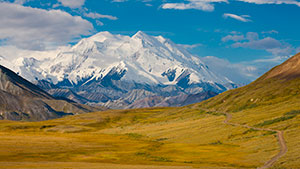

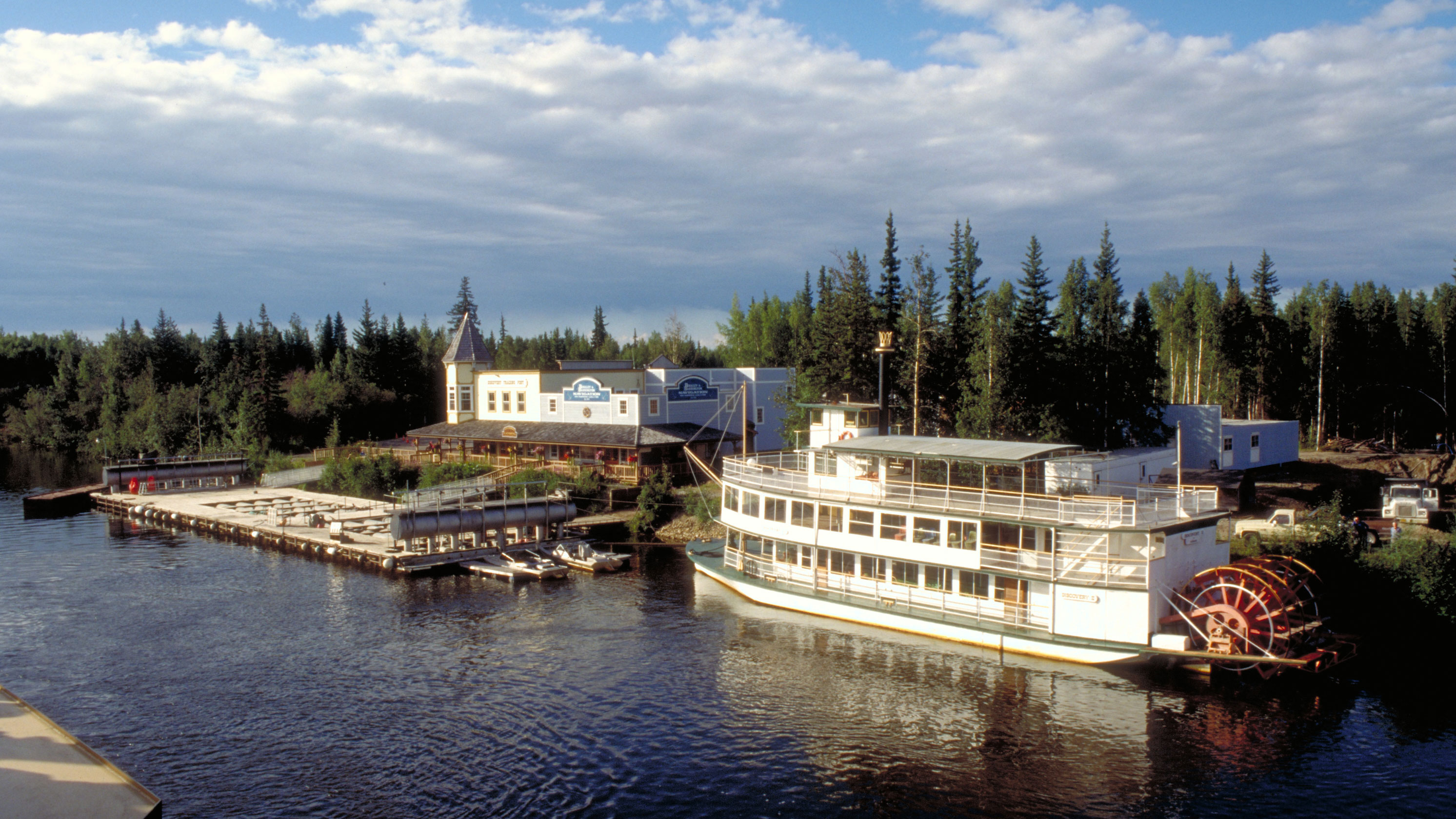
The Denali Nation Park and Area houses Mt McKinley the tallest peak in North America. Denali National Park is known for it’s wildlife sightings such as brown bear, caribou, dall sheep, moose, and wolf as well as fox, wolverine, lynx and many more. The 91 mile road into the park travels to Wonder Lake and Kantishna, a small active gold mining area although most of the parks six million acres are not accessible by road.
The Fairbanks Area is often called the heart of the interior with each community offering something unique. Fairbanks, known as the trade and transportation center for Alaska’s interior and Far North and is Alaska’s second largest city. Located just 12 miles south of Fairbanks is North Pole, Alaska. Local area attractions include the Trans-Alaska pipeline, many natural hot springs, and the Santa Claus House which receives thousands of letters a year for Santa and is complete with a gift ship and reindeer.
The Northeast Interior is a very remote area only accessible by plane in the warmer winter months or by boat, in the winter months for the more adventurous snow machines and “ice road”, which are frozen rivers, are often used. Located within the Northeast Interior is Fort Yukon, one of the older settlements in Alaska and the largest primarily Athabascan village in Alaska. It’s located just north of the Arctic Circle, and provides the best viewing for the aurora borealis than anywhere else in the entire world.
The Far North
The Far North is Alaska’s most diverse region filled with natural wonders and pristine wilderness and landscape ranging from coastal plains to mountain ranges. The Far North is home to the Inupiat Eskimos who follow a subsistence lifestyle. The Far North has three distinct areas the Arctic Coast, The Brooks Range, and the Western Arctic.
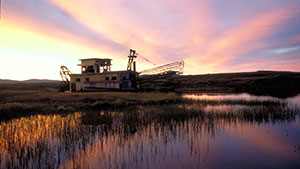
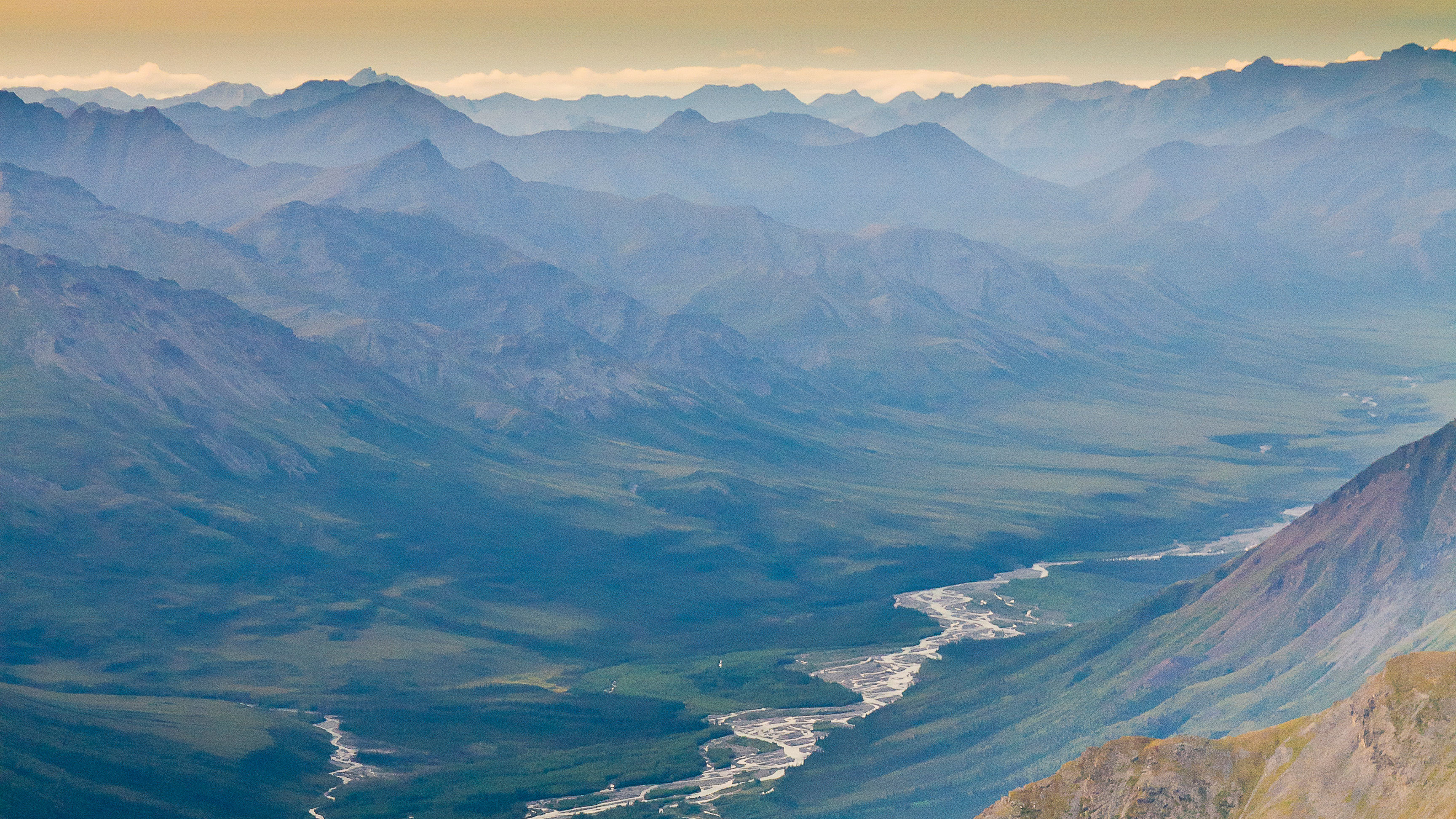
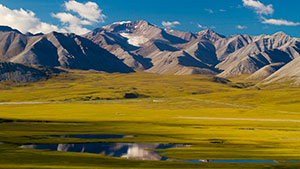
The Arctic Coast houses the largest oil field in North America, located Prudhoe Bay which is the start of the Trans-Alaska pipeline. Also located along the Arctic Coast is Barrow; the most northern town in North American which is also the farthest northern frontier settlement in the United States, and one of the larges Eskimo settlements in AK.
The Brooks Range is made up of millions of acres of wilderness park lands within the Gates of the Arctic National Park and Preserve, and the Arctic National Wildlife Refuge.
The Western Arctic is remote yet contains two of the largest communities in the Far North. Also located in the Western Arctic is the Bering Land Bridge National Park and Preserve which encompasses many land forms including, beaches, sand dunes, ganite spires, barrier islands and tundra as well as the Sepentine Hot Springs. There is also the Kobuk Valley National Park, home of the largest active sand dune filed in the arctic.
Southcentral
Southcentral is home to more than half of Alaska’s residents and houses the largest city in the state, Anchorage. The terrain differs from scenic coastline to craggy mountain summits. Southcentral is made up of five distinct areas the Mat-Su Valley and Copper River Valley to The Anchorage area, Prince William Sound and the Kenai Peninsula.
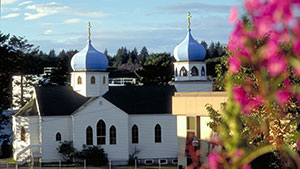

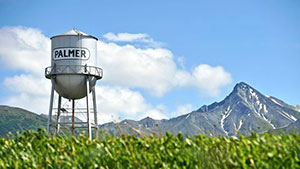
The Anchorage Area has so much to offer including wilderness trails, wildlife viewing, cultures, great mountainous views all within the city limits. Anchorage is a unique city, and Alaska’s largest, offering accommodations and transportation options of a large corporate city, yet is located in the heart of Moose country and surrounded by wilderness.
The Copper River Valley, which includes the Wrangell St Elias National Park and Preserve is located northwest of Anchorage and is surrounded by four mountain ranges; the Wrangell St Elias Mountains to the east, the Alaska Range to the north, the Chugach to the south, and the Talkeetnas to the West. The Wrangell St Elias range has nine of twenty of the highest peaks in North America. The Copper Valley itself is an ancient lakebed. This area can be accessed by two major highways, Richardson and Glenn.
The Kenai Peninsula is often referred to as Alaska’s Playground and is made up of 25,600 square miles of mountains, valleys, fjords, rivers, lakes, and ice fields, including the Kenai Fjords National Park and Kenai National Wildlife Refuge. The peninsula contains some of the most accessible wilderness activities and attractions in the state.
The Matanuska-Susitna Valley a.k.a. the Mat-Su Valley, is bordered by Anchorage, the Copper River Valley, and Denali National Park. This are was originally settled by families from the Midwest region as part of the “New Deal Relief Program” in 1935. Due to the fertile farmland and the immense amount of summer sunlight, vegetables grow to incredible sizes. But there’s more to this area than farmlands and scenic valleys; there are large mountains, numerous lakes, long rivers, big fish, glaciers and much, much more!
Prince William Sound spans 10,000 square miles of protected waterways, islands, fjords, as well as glaciers, and 3,500 miles of coastline. Bear, deer, goats and sheep inhabit the mainland while whales, propose, sea otters, sea lions, and seals call the narrow fjords home. One of the most famous attractions of Prince William Sound is the Columbia Glacier. At four miles wide and over 200 feet tall at the face, this glacier, the second largest in the state, is about the size of Los Angeles or the entire state of Rhode Island.
